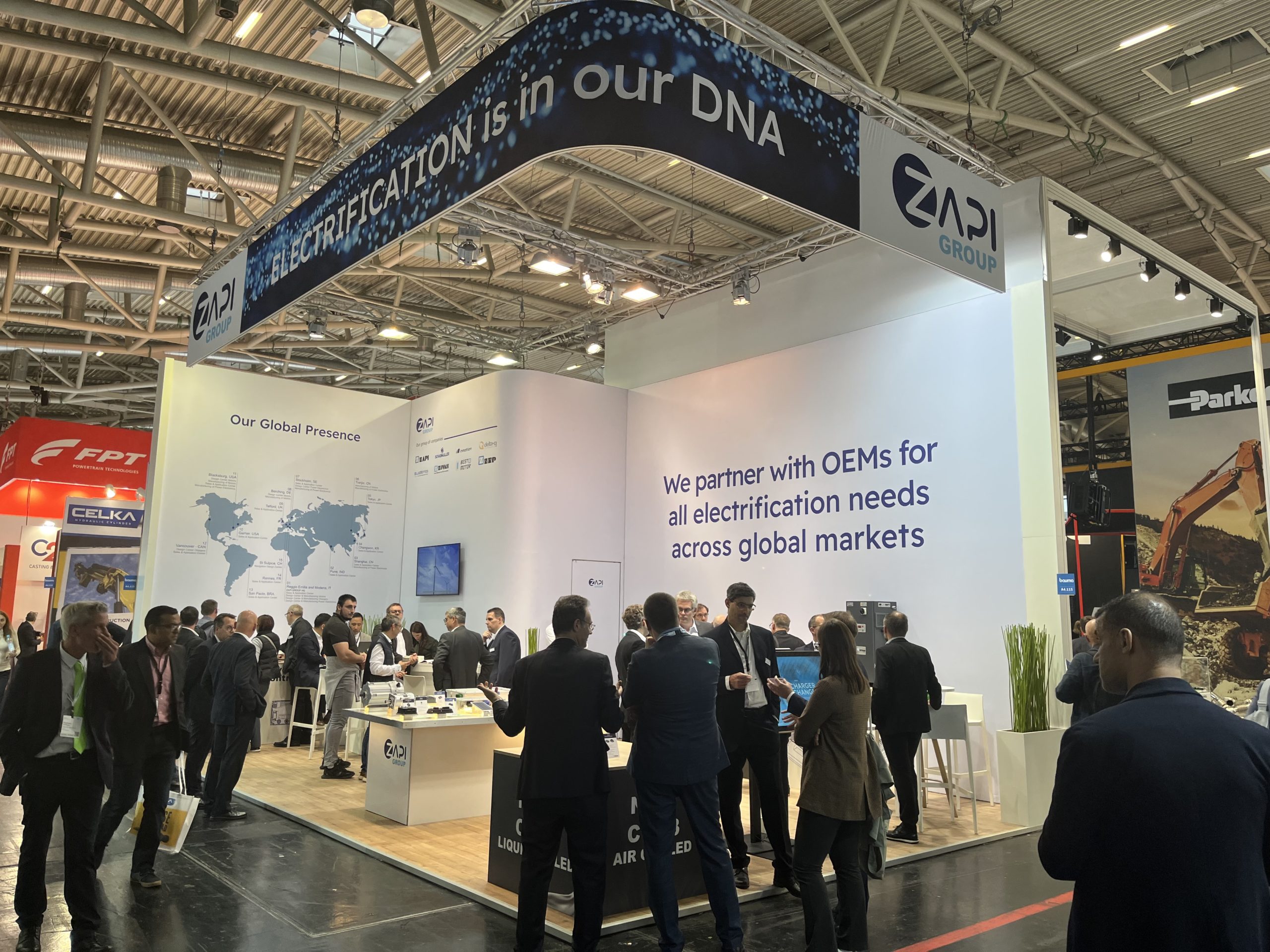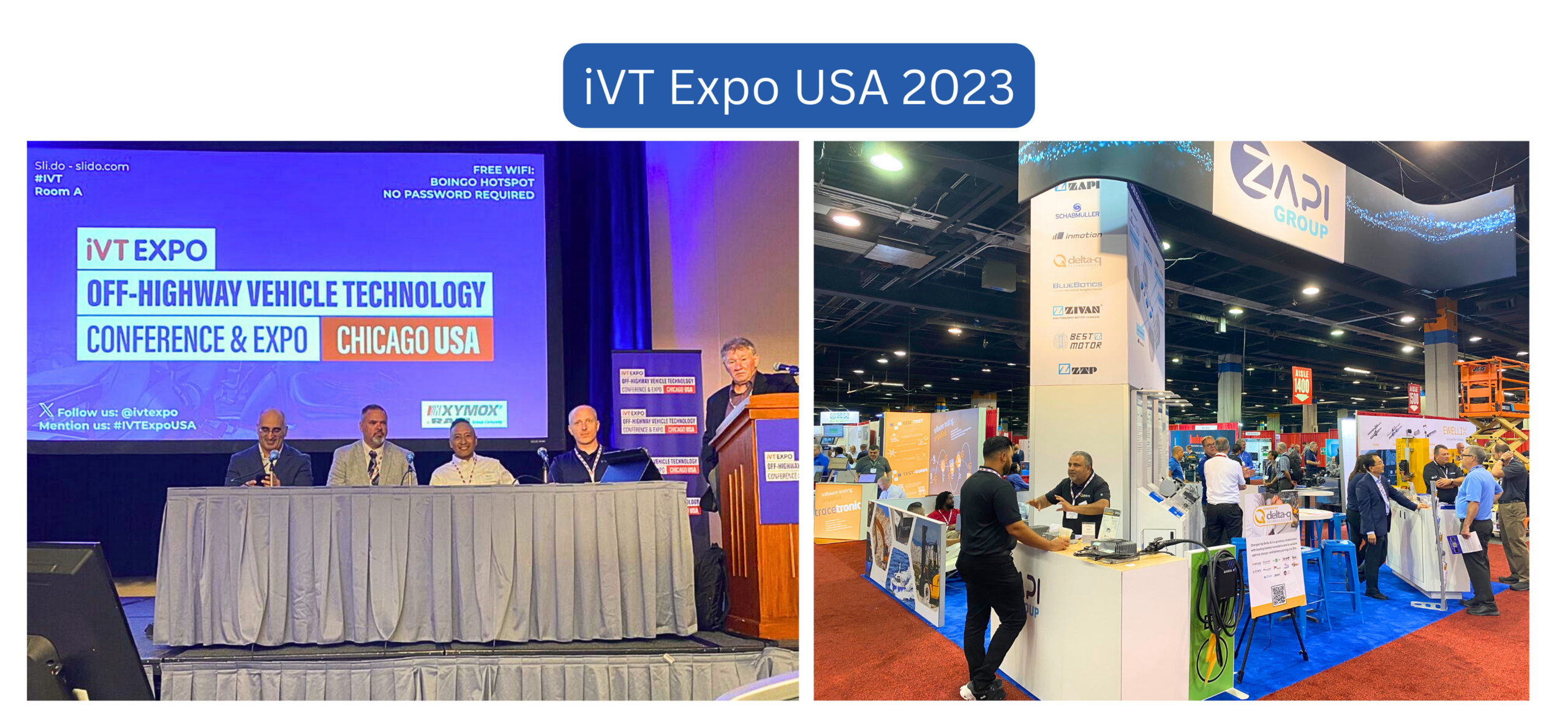Our team trekked to Munich, Germany, as part of the ZAPI GROUP delegation, to be one of 3,200 exhibitors in this year’s bauma showcase. Occurring triennially, it is the largest trade show for the construction, building material and mining industry. As in years past, the show had a large global presence, with over half of the participants originating from outside Germany.
Key Trends from Bauma
Electrification was the most consistent thread throughout the showcase. Looking back to the 2019 exhibit, 2022 had more “show” than “tell”. Most OEMs (large and small) have bought into an electric future with projects either underway or already in production. That being said, full-scale electrification of the construction industry is still likely some years away, with researchers estimating 2025 as the ramp-up tipping point.
Some general observations:
- More than 90% of the OEMs present showcased electric options. It was only a small minority that did not showcase any eMachines.
- At least 60 electric battery-powered mobile construction machines were showcased.
- Construction electrification reached mainstream adoption in <20kW mini/compact machine categories, particularly mini excavators and loaders.
- Electric variants are now available in all categories of light construction equipment, typically 48V with 300W-1.5kW portable chargers.
- Medium and large construction machine (30-400kW) electrifications are well into the early adoption phases, particularly with telehandlers, excavators and loaders.
- This year, the emphasis was on electrifying road paving and compacting equipment, with most OEMs showcasing battery-powered solutions.
- Three powertrain voltages are emerging: 48V, 350V and 700V. A few OEMs are using mid-voltages.
- Electric vehicle (EV) connectors and charging stations are extensively used on mobile electric construction equipment.
- Several vendors are contributing to solving the construction site electric power availability issue with Mobile Battery Containers of 35 to 600kWh that are charged off-site and then dropped at the construction site.
- There is fascinating new technology making its ways to market, such as 3D Concrete Building Printer and a 12kV-200A connector and junction box.
Strict Emission Regulations
Environmentally conscious municipalities and high diesel prices are the main drivers for faster CE electrification adoption. All roads point toward electric power as an ideal alternative power source to counter greenhouse gas (GHG) emissions and meet strict European noise regulations. This direction has only intensified since 2019, a year marked by significant regulatory publications, including:
EU Stage V Emissions Regulation: The European Union implemented the toughest emissions regulation for non-road mobile machinery, called Stage V, in January 2019. This impacts construction equipment, mining equipment, utility vehicles, material handling, and agriculture equipment.
- Oslo aims to reduce carbon emissions by 95 percent compared to 2009 by 2030. To reach this climate target, the city is banning internal combustion engines, like Amsterdam, and only zero-emission construction equipment will be permitted in the city from 2025 onwards.
China VI Emission Standard: China created its emission standard for heavy-duty vehicles called Stage VI. Going into effect on July 1, 2019, this standard combines best practices from European and U.S. regulatory requirements.
UN Intergovernmental Panel on Climate Change (IPCC) called for global carbon emissions to be cut by 45% by 2030 and to zero by 2050.
These regulations sent a clear message to the construction industry: solely fossil-fuel-dependent machinery is incompatible with sustainability goals. Adhering to such regulations can be complex and expensive. However, many OEMs seek suppliers to help navigate their electrification pathways.
Delta-Q Around the Show
While Delta-Q is still making a name as a construction equipment supplier in Europe, our team was very pleased to see some products showcasing our chargers. A few highlights were:
- German manufacturer Wacker Neuson, with the most extensive electric construction equipment offering in the show, featured our IC650 in their Rammers
- Motor vehicle parts manufacturer ELEO used our ICL1500 in their e-Powertrain and battery pack
- Bomag/Fayat – Light construction equipment featured our ICL1500 charger
- Caterpillar used our stackable ICL1500 and VCIM in their 48V on-board charger
We look forward to sharing our unique battery-charging technology with a larger international audience in the months and years to come.
The Future of Construction and Mining Equipment
The Bauma tradeshow demonstrated that the construction industry is embracing electrification quickly.
With climate change a global crisis, we were impressed to see how construction equipment manufacturers are innovating and investing in creating more environmentally friendly vehicles.
That ramp-up “tipping point” of 2025 is rapidly approaching. Battery-electric adoption continues to gain momentum across all sizes of OEMs. Technological development surges forward to meet the demands of a growing battery industry, focused on meeting increasingly strict emissions regulations. It will be exciting to see what the equipment floor looks like three years from now at Bauma 2025!




